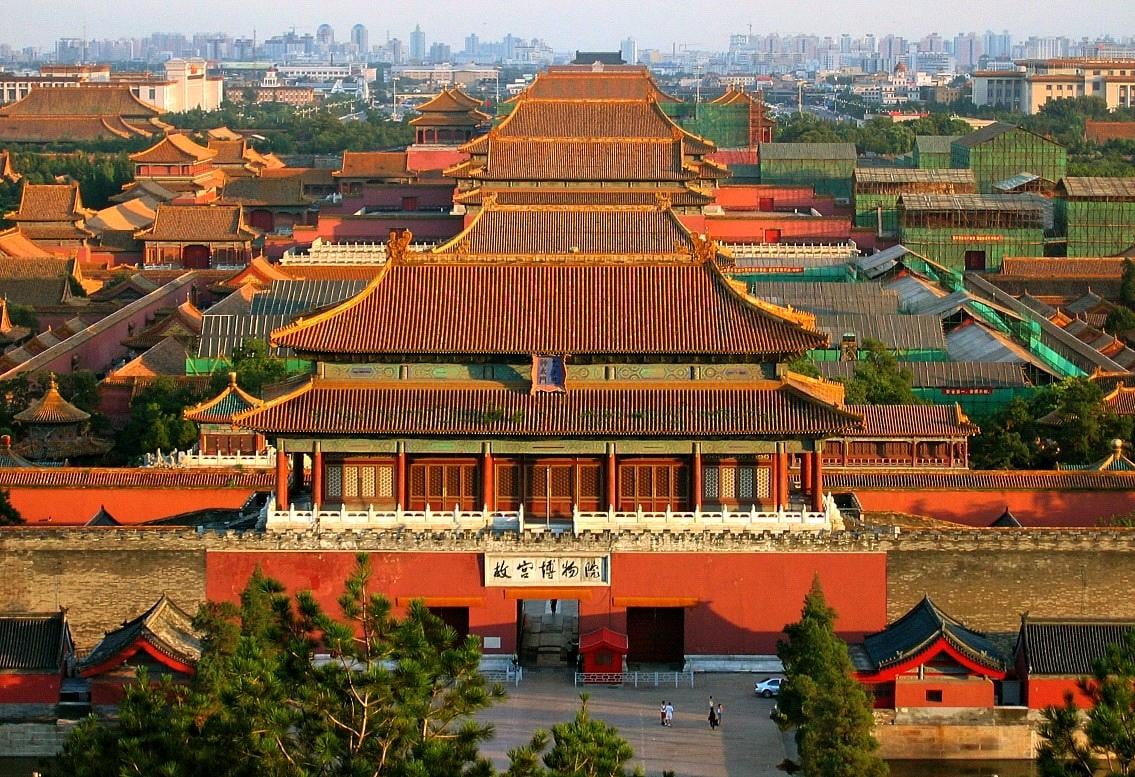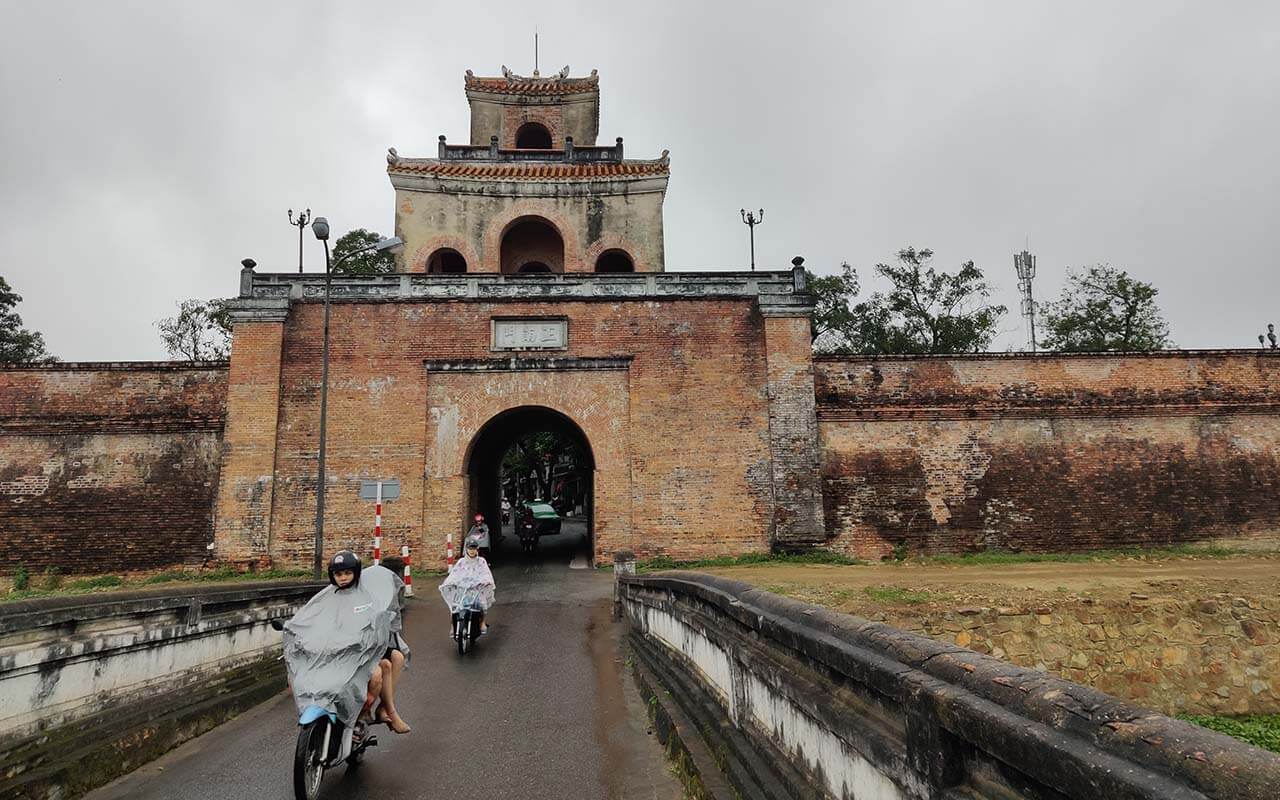Explore the massive architectural works of Hue Citadel during the Nguyen Dynasty #part 1
Hue Citadel, one of the most important works of the Nguyen Dynasty, preserves memories of Vietnam's feudal period of power. Visitors to Hue must definitely explore this place to admire the beauty of the timeless buildings of the ancient capital.
Hue Citadel is the most famous and attractive tourist destination in Hue. When traveling to Hue, visitors not only admire the dreamy and ancient landscapes but also have the opportunity to learn about the history and architecture of the place where power once flourished.
1 Location
Located on the banks of the romantic Perfume River, Hue Citadel relic - also known by many as Thuan Hoa Citadel is an ancient citadel, belonging to the Hue Monuments Complex recognized by UNESCO as a World Cultural Heritage. . The monument is located right in the center of Hue city, built with a unique architectural style. The area of Hue Citadel is 520 hectares. For 143 years since 1802, this was the capital of the Nguyen Dynasty. After 2 centuries of devastation from time and war, Hue Citadel still retains its original appearance.
The area of Hue Citadel is 520 hectares. For 143 years since 1802, this was the capital of the Nguyen Dynasty. After 2 centuries of devastation from time and war, Hue Citadel still retains its original appearance.
2. History of Hue Citadel
Hue Citadel began to be built in the summer of 1805, under the reign of King Gia Long. Before that, since 1803, the planning of the capital had been taking place. The entire field survey process was undertaken by King Gia Long himself and the Nguyen Dynasty's mandarins. _1624413054.jpg) Compared to the ancient capital Phu Xuan, the ancient Hue Citadel was much more expanded. During the construction phase in 1805, the royal court had to mobilize about 30 thousand people and soldiers to serve in blocking the river and digging trenches. The 10 gates around the citadel began to be built in 1809.
Compared to the ancient capital Phu Xuan, the ancient Hue Citadel was much more expanded. During the construction phase in 1805, the royal court had to mobilize about 30 thousand people and soldiers to serve in blocking the river and digging trenches. The 10 gates around the citadel began to be built in 1809.
By 1818, the number of people mobilized to build the citadel reached 80 thousand people, focusing on building bricks on the four sides East - West - South - North. In 1831-1832, King Minh Mang built additional shooting walls on the outside of the citadel, perfecting the architecture of the capital.
3. Hue Imperial City Architecture
Learning about Hue Citadel, it is known that this place has a nearly square floor plan, the front is slightly cupped like a bow because it has to follow the slight bend of the Perfume River flowing through. The citadel's perimeter is more than 10km wide, built in the Vauban - French citadel style (military defense technique with 24 bastions protruding outside) combined with Eastern architectural principles. Under skillful application, suitable to the actual terrain, Hue Citadel becomes a unique work of military art and architecture. The architectural characteristics of Hue Citadel are different from many previous ancient capitals. Hue Citadel has a total of 13 gates. Of these, 10 city gates will open to the outside, 1 internal city gate, 2 defensive city gates
Hue Citadel has a total of 13 gates. Of these, 10 city gates will open to the outside, 1 internal city gate, 2 defensive city gates
Southeast gate (Thuong Tu gate)
The citadel gate is located in the East corner of the Southeast of the Citadel. The arch was built in 1809, the gazebo was built in 1829. The Nguyen court established the Thuong Tu Institute to take care of the king's horses here at the citadel gate called Thuong Tu gate.
The Nhon door (Chanh door)
The citadel gate is located in the south, to the left of Ky Dai of the Citadel. The arch was built in 1809, the gazebo was built in 1829. The original name was The Nguyen, after King Minh Mang changed it to The Nhon. People call it Ngan gate because people were stopped here when the king or his concubines went to Phu Van Lau or Luong Ta's house to cool off or bathe in the river. The door has 4 cannons called Ta Dai General.
Quang Duc gate (Sap gate)
The door is located in the south of the Citadel. The name is based on the word Quang Duc palace. The citadel's arch was built in 1809, and the gazebo was built in 1829. During the flood in 1953, both the arch and the gazebo collapsed completely, so people called it the Sap gate. The door was restored in 1998 after being heavily damaged by the war in 1968. The door has 5 cannons called Huu Dai General.
Chanh Nam gate (Nha Do gate)
The door is also located in the south of the Citadel. People often call it Nha Do gate because outside the door there is Thuong Ty (Do Gia), which translates to Nha Do. The arch was built in 1809, the gazebo was built in 1829. The door collapsed in 1953 due to flooding, but was later restored.
Southwest gate (Huu gate)
The gate is located in the southwest of the Citadel. The arch was built in 1809, the gazebo was built in 1829. In 1885, King Ham Nghi left the city to the war zone outside Quang Tri from this door. During the war, the city gate collapsed and was later restored.
Chanh Tay Gate
The gate is located in the west of the Citadel, on Thai Phien Street. The arch was built in 1809, the gazebo was built in 1829. This was a place of fierce fighting during the war in 1968, so it was severely damaged. Later, the door was restored
Chanh Dong gate (Dong Ba gate)
The city gate is on the east side. People also call it Dong Ba gate due to the presence of Dong Hoa fortress from Gia Long's reign. The arch was built in 1809, the gazebo was built in 1824. In 1885, the war between France and the Imperial army led by Ton That Thuyet took place fiercely here. The gazebo part of the door collapsed and the arch door was damaged after the war in 1968.
Northeast gate (Ke Trai gate)
The gate is located in the Northeast corner of the Citadel, located on the banks of the Dong Ba River. The arch was built in 1809, the gazebo was built in 1824 and is one of the two earliest gazebo doors built. Local people call it Ke Trai gate because in the past there was Ke Trai hamlet in front of the citadel gate.
Chanh Bac Gate (Back Gate)
The door is located at the back of the Citadel so it is called the Back door. The arch was built in 1809, the gazebo was built in 1831. After the war, the door was heavily damaged and closed for 120 years. In 2004, the door was opened after repair work.
Northwest gate (An Hoa gate)
The gate is located in the northwest corner of the Citadel connecting Tang Bat Ho and Nguyen Trai streets. The gate arch was built in 1809, the gazebo was built in 1831. People call it An Hoa gate because in front of the citadel gate is An Hoa village and market.
Tran Binh Mon
This door does not lead to the outside but leads to Tran Binh Dai - the defensive fortress of the Imperial City, connecting the two fortresses of Dong Binh and Bac Dinh together.
Tay Thanh water gate
The water intake from Ke Van River to Ngu Ha River is responsible for drainage within the city and is a waterway for boats to transport goods to trade. The gate was built in 1826 during the reign of King Minh Mang.
Dong Thanh Water Gate
This is the water gate from Ngu Ha to Dong Ba River. The gate was built in 1830 during the reign of King Minh Mang.
Hue Citadel has many unique architectures and many beautiful scenes. We invite you to explore further in the following section. Sincerely thank you for visiting the channel, please leave your comments below in the comments section































